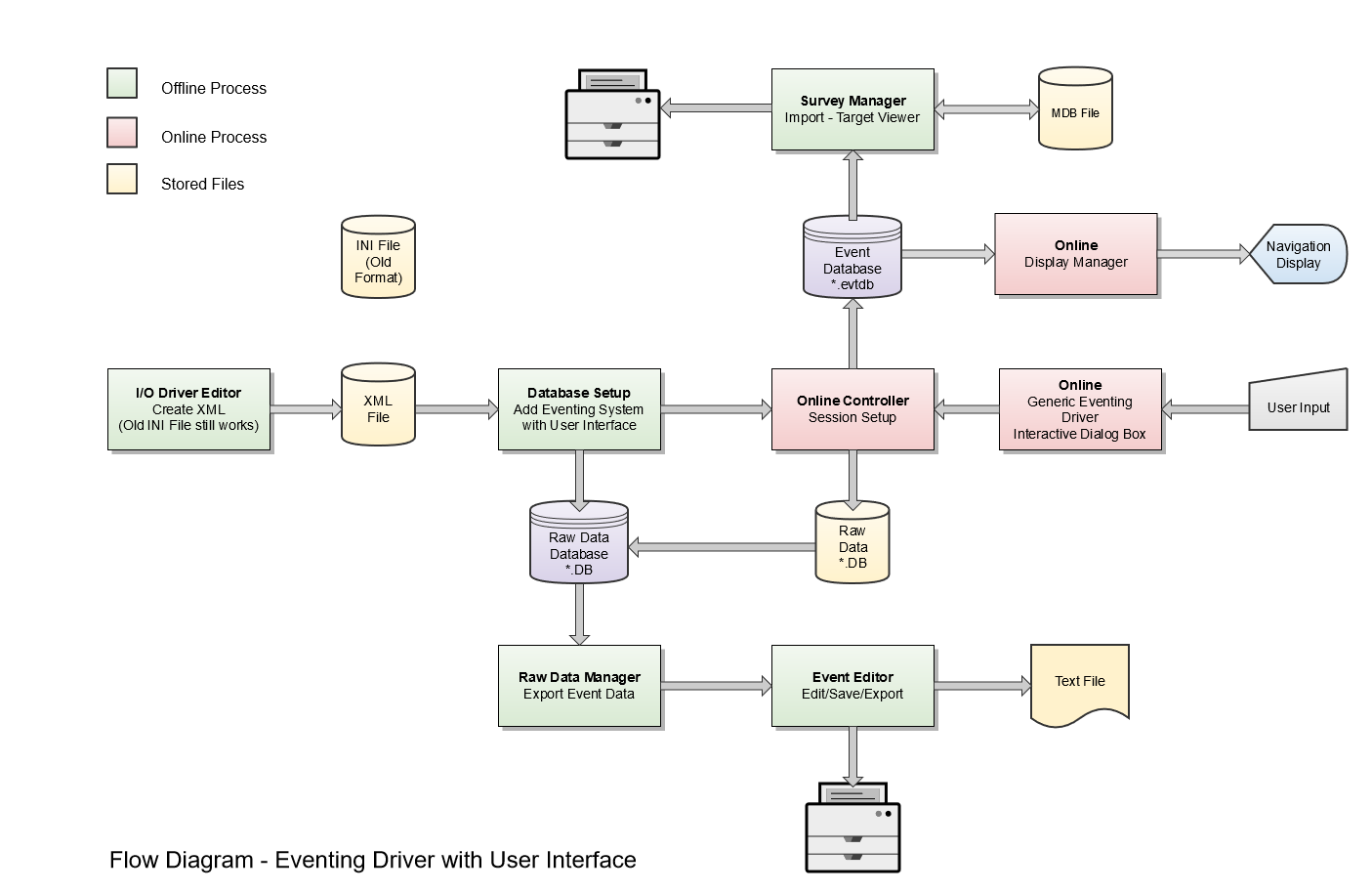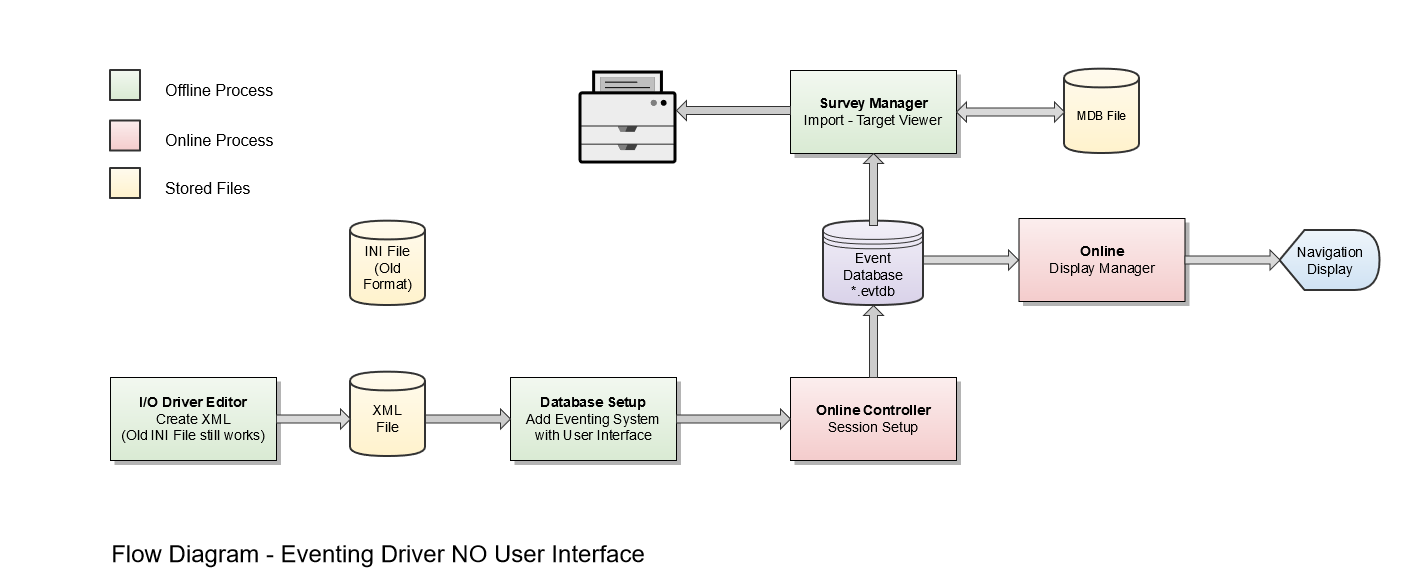How-to Eventing
This How-to describes how to use Eventing in Qinsy.
On this page:
Walk through the child pages to complete the eventing process.
Child pages:
Purpose
Sometimes it is required/useful to maintain a log of events that occur during a survey.
For example:
- State changes occurring at intervals through the project as in a dredging operation - start dredging, stop dredging, start transit full, end transit full, start dumping, end dumping, etc.
- Changes in the work procedure
- Detection of objects on the seafloor, as in a pipeline inspection survey - anodes, field joints, wellheads, crossings, etc.
The log contains a list of triggered events and their properties, connected to the times that the events occurred and the actual positions of the relevant nodes when the events occurred.
When creating events individual 'Events' are assigned to 'Classes of Events'.
For example in pipeline inspection surveys there might be:
- Class = 'Pipeline Features'. Individual events assigned to this class might be 'anode', 'collar', 'beginning of span', 'end of span', 'beginning of burial', 'end of burial', 'pipe crossing', 'mattress', 'wellhead', etc.
- Class = 'Pipeline Damage'. Individual events assigned to this class might be 'lateral buckling', 'upheaval', 'rupture', 'leak', 'coat flaking', etc.
- Class = 'Environment'. Individual events assigned to this class might be 'debris', 'rocks', 'sand waves', 'anchor scar', 'trench', etc.
This is only one example. The functionality is flexible and adaptable enough to use for many different purposes, even keeping daily logs.
Each event may be assigned one or more properties thereby allowing entry of a wide range of data and metadata, selected from predefined lists or using custom input.
Events can also be linked to Generic ASCII logging, where the events can be stored in *.log files.
Note
The Eventing System has two driver options that result in different ways to generate/fire events when online:
Generic Eventing Driver - has a dedicated interactive window for firing events and entering event properties.
Generic Eventing Driver (No User Interface) - as the name suggests this version of the driver does not use an interactive window online. It was developed for use in the dredging industry.
Given its specialized application the following descriptions provide an overview of its use. Please refer to Qinsy dredging documentation ('How-to Dredging') for a more in-depth explanation of its use.
Data Flow
Generic Eventing Driver (with User interface)
Qinsy stores events in the recorded Databases (*.db files) by means of a special driver called the ‘Generic Eventing Driver’.
These files are opened using the Event Editor which is started via the Export - Event Data function from the Raw Data Manager.
Events can also be stored to an Event Database file (*.evtdb file), which can be edited while Online and/or imported into the Survey Manager for editing and export.
The procedure to follow:
- Using the I/O Driver Editor program, create a user defined list of events anticipated to occur during a survey.
The Eventing configuration is stored in an ‘Xml-file’ found in the Qinsy Public Files Folder, accessed through the Console - Support menu (typically C:\Users\Public\Documents\QPS\Qinsy\Eventing). - Using the Database Setup program, create an Eventing System using the Xml file previously created.
- Using the Generic Eventing Driver dialog window, capture events when Online as they are fired during the survey. These are stored in *.DB files.
- Using the Controller Session Setup - Eventing, store events in *.EVTDB files.
- Using the Controller Session Setup - Eventing - General - Edit Events, process the events stored in *.DB files. Print/save to HTML or Text file.
- Using the Target Viewer program accessed from the Survey Manager, import events from *.EVTDB files. Export, print and visualize.

Generic Eventing Driver (No User interface)
Qinsy stores events to an Event Database file (*.evtdb file) by means of a special driver called the ‘Generic Eventing Driver (No User Interface)'.
These files can be edited while Online and/or imported into the Survey Manager for editing and export.
The procedure to follow:
- Using the I/O Driver Editor program, create a user defined list of events anticipated to occur during a survey.
Along with any other created Driver I/O files, the Eventing configuration is stored in an ‘Xml-file’ found in the Qinsy Public Files Folder, accessed through the Console - Support menu (typically C:\Users\Public\Documents\QPS\Qinsy\Eventing). - Using the Database Setup program, create an Eventing System using the Xml file previously created.
- Using controls in the Controller Session Setup - Eventing, capture events fired by external triggers when Online as they occur during the survey.
- Edit events from the Controller Session Setup - Eventing - General - Edit Events and/or
- Import *.evtdb files into the Target Viewer program accessed from the Survey Manager. This creates an MS Access *.mdb file, which is used to store spatial data like sidescan targets, eventing events and user definable annotations.

